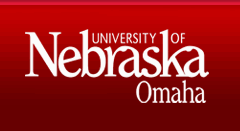Dibenzannulated medium-ring keto lactams as novel compounds with high potency against Toxoplasma gondii
Presenter Type
UNO Graduate Student (Masters)
Major/Field of Study
Biology
Advisor Information
Dr. Paul H. Davis
Location
CEC RM #116
Presentation Type
Oral Presentation
Start Date
22-3-2024 10:30 AM
End Date
22-3-2024 11:45 AM
Abstract
Importance of novel antiparasitic compounds has increased with drug resistance and disease prevalence. Plasmodium, the causative agent of malaria, and Toxoplasma, the causative agent of toxoplasmosis, are related apicomplexan parasites with insufficient treatment options. In 2022, there were 250 million cases of malaria, with over 600,000 ending in death. Toxoplasma is estimated to infect roughly one third of all people globally, and toxoplasmosis is one of the leading causes of fetal mortality and malformation. Through study of compound chemotypes that are active against apicomplexans Plasmodium and Toxoplasma, we decided to test dibenzannulated medium-ring keto lactams (11,12-dihydro-5H-dibenzo[b,g]azonine-6,13-diones). These compounds were relatively stable (12.5 to >100 100 μg/mL at pH 6.5) and soluble (LogD = 3). A unique aspect of this chemotype is its collapse into a less soluble but more potent second chemotype following delivery. These compounds were relatively low in toxicity against host (human) cells (IC50 > 30 μM), and the four most potent compounds were relatively potent against both Plasmodium falciparum (IC50 = 4.2–9.4 nM) and Toxoplasma gondii (IC50 = 80–200 nM) in vitro, as the current treatment for toxoplasmosis, pyrimethamine, is 5–13 times less potent. Due to the discovered high potency of this chemotype, these are favorable compounds to test in vivo. The next step for our lab is an in vivo study with an acute Toxoplasma infection to determine the efficacy of these compounds in a living model.
Dibenzannulated medium-ring keto lactams as novel compounds with high potency against Toxoplasma gondii
CEC RM #116
Importance of novel antiparasitic compounds has increased with drug resistance and disease prevalence. Plasmodium, the causative agent of malaria, and Toxoplasma, the causative agent of toxoplasmosis, are related apicomplexan parasites with insufficient treatment options. In 2022, there were 250 million cases of malaria, with over 600,000 ending in death. Toxoplasma is estimated to infect roughly one third of all people globally, and toxoplasmosis is one of the leading causes of fetal mortality and malformation. Through study of compound chemotypes that are active against apicomplexans Plasmodium and Toxoplasma, we decided to test dibenzannulated medium-ring keto lactams (11,12-dihydro-5H-dibenzo[b,g]azonine-6,13-diones). These compounds were relatively stable (12.5 to >100 100 μg/mL at pH 6.5) and soluble (LogD = 3). A unique aspect of this chemotype is its collapse into a less soluble but more potent second chemotype following delivery. These compounds were relatively low in toxicity against host (human) cells (IC50 > 30 μM), and the four most potent compounds were relatively potent against both Plasmodium falciparum (IC50 = 4.2–9.4 nM) and Toxoplasma gondii (IC50 = 80–200 nM) in vitro, as the current treatment for toxoplasmosis, pyrimethamine, is 5–13 times less potent. Due to the discovered high potency of this chemotype, these are favorable compounds to test in vivo. The next step for our lab is an in vivo study with an acute Toxoplasma infection to determine the efficacy of these compounds in a living model.


Additional Information (Optional)
Collaborators:
Dibenzannulated medium-ring keto lactams as novel compounds with high potency against Toxoplasma gondii
Matthias J. Walters1, Thomas T. Schulze1,2, Andrew J. Neville1, Paul H. Davis1, et al.3,4,5,6
1 Department of Biology, University of Nebraska at Omaha, 6001 Dodge St., Omaha, Nebraska 68182, United States
2 Department of Pathology and Microbiology, University of Nebraska Medical Center, 985900 Nebraska Medical Center, Omaha, Nebraska 68198-5900, United States
3 College of Pharmacy, University of Nebraska Medical Center, 986125 Nebraska Medical Center, Omaha, Nebraska 68198-6125, United States
4 Department of Medical Parasitology and Infection Biology, Swiss Tropical Institute, Kreuzstrasse 2, CH-4123 Allschwil, Switzerland
5 University of Basel, CH-4003 Basel, Switzerland
6 Centre for Drug Candidate Optimisation, Monash Institute of Pharmaceutical Sciences, Monash University, 381 Royal Parade, Parkville, Victoria 3052, Australia